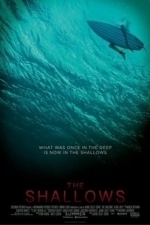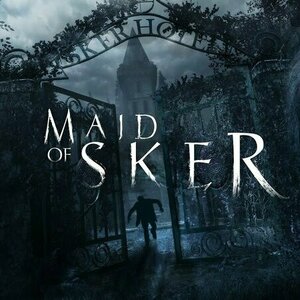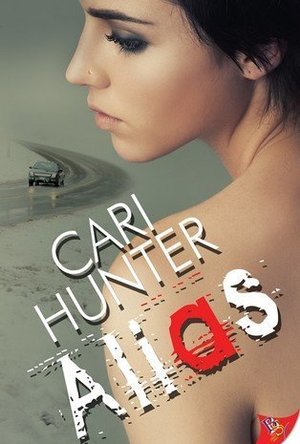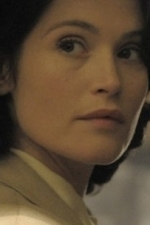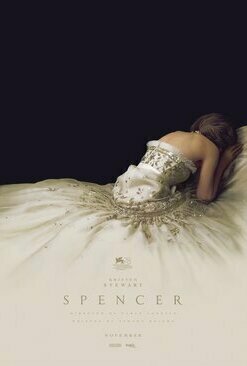Search
Search results

Live Train Times UK - National Rail
Travel and Lifestyle
App
One of Sainsbury's Magazine's "20 Best Apps for Busy People"! Officially licensed and best...

National Rail Enquiries: Train journey planner
Navigation and Travel
App
Stay on track with the free National Rail Enquiries App, Great Britain’s number one destination...

Lloyds Bank Express Logon
Finance
App
Express Logon for iPad is specially designed to make banking with us fast, convenient and more...
Bob Mann (459 KP) rated The Shallows (2016) in Movies
Sep 29, 2021
The Deathly Shallows, part 1
Every shark movie is inevitably compared (unfavourably) against Spielberg’s classic 1975 tourist-muncher. And “The Shallows” is no exception. But while not a 5-Fad classic, this flick comes pretty close by being hugely enjoyable and having a lot going for it.
Waxing lyrically. The shapely Blake Liveley.
Waxing lyrically. The shapely Blake Liveley.
Blake Lively (“The Age of Adeline“) plays surfer and trainee doctor Nancy, still grieving the recent death from cancer of her mother and travelling to a remote Mexican surf beach where she has photos of her mother surfing while pregnant with her. While surfing alone, Nancy is attacked a couple of hundred yards from the shore by a Great White and severely injured. She has the choice of refuge of either a low rock or another less palatable floating object. Choosing the rock (at low tide) she is faced with the dilemma of both surviving her injuries and then being rescued before the high tide takes the rock and leaves her to the mercy of the ever circling big-fish.
We're going to need a bigger rock.
We’re going to need a bigger rock.
A big summer blockbuster this is not, with a total cast of eleven (not including a guest appearance of Steven Seagull (as himself)). But the small cast doesn’t make it less gripping, and gripping it most certainly is, with tension building progressively (emphasised periodically by an on-screen clock) with the countdown to high tide.
Blake Lively is an underrated actress and really delivers the goods here. And bearing in mind the problems that Spielberg had with his mechanical shark Bruce (named after Spielberg’s lawyer) the appearance of the shark is limited to where actually needed, with Lively having to fill in the blanks with reaction shots. As your imagination is still far better than any special effects, this is hugely effective for certain sequences.
Pure horror: here Dad had gone down to the video rental and come back with 'Dirty Grandpa'.
Pure horror: her Dad had gone down to the video rental and come back with ‘Dirty Grandpa’.
The film draws similarities to another interesting entry in the “Jaws” genre – “Open Water 2: Adrift” from 2006. In that film there was the same incessant threat of shark attack combined with the audience frustration that safety (in that case, the deck of their yacht, if only they had let a ladder down) being so near. Here the 200 yards to the shore is shoutable to but still 190 yards too far.
The cinematography (by Flavio Martínez Labiano) is also just beautifully done with some stunning surf and underwater shots that not only highlight Ms Lively’s lithely (sic) figure and her Californian surfing skills, but also the beauty of the ‘Mexican coast’ (actually Lord Howe Island in New South Wales, Australia).
“The Shallows” was written by Anthony Jaswinski and directed by Jaume Collet-Serra (the director of “Non-Stop“, aka Taken 3.5). It comes with a truly impressive BvS quotient of just 5.9%!
So with all of this going for it, you would think that my rating is heading towards at least a 4.5. But all films like this require a satisfying denouement, and unfortunately this is where this one comes off the rails. It is just plain silly and, together with an unnecessary and irritating epilogue scene, diminishes what was on track to be one of the best films of the summer. So here’s the “One Mann’s Movies” solution:
Using Final Cut X, Adobe Premier or your favourite video editing suite, cut out the scene from 115:00 to 116:00 from “Jaws”;
Photoshop Blake Lively’s face onto Roy Scheider’s body.
Insert the finished clip into “The Shallows” at about 82 minutes in.
Enjoy a 5-Fad classic!
This limitation aside, it’s still worth your while hunting it out at a cinema near you, since the fantastic cinematography is best suited to a big screen.
Waxing lyrically. The shapely Blake Liveley.
Waxing lyrically. The shapely Blake Liveley.
Blake Lively (“The Age of Adeline“) plays surfer and trainee doctor Nancy, still grieving the recent death from cancer of her mother and travelling to a remote Mexican surf beach where she has photos of her mother surfing while pregnant with her. While surfing alone, Nancy is attacked a couple of hundred yards from the shore by a Great White and severely injured. She has the choice of refuge of either a low rock or another less palatable floating object. Choosing the rock (at low tide) she is faced with the dilemma of both surviving her injuries and then being rescued before the high tide takes the rock and leaves her to the mercy of the ever circling big-fish.
We're going to need a bigger rock.
We’re going to need a bigger rock.
A big summer blockbuster this is not, with a total cast of eleven (not including a guest appearance of Steven Seagull (as himself)). But the small cast doesn’t make it less gripping, and gripping it most certainly is, with tension building progressively (emphasised periodically by an on-screen clock) with the countdown to high tide.
Blake Lively is an underrated actress and really delivers the goods here. And bearing in mind the problems that Spielberg had with his mechanical shark Bruce (named after Spielberg’s lawyer) the appearance of the shark is limited to where actually needed, with Lively having to fill in the blanks with reaction shots. As your imagination is still far better than any special effects, this is hugely effective for certain sequences.
Pure horror: here Dad had gone down to the video rental and come back with 'Dirty Grandpa'.
Pure horror: her Dad had gone down to the video rental and come back with ‘Dirty Grandpa’.
The film draws similarities to another interesting entry in the “Jaws” genre – “Open Water 2: Adrift” from 2006. In that film there was the same incessant threat of shark attack combined with the audience frustration that safety (in that case, the deck of their yacht, if only they had let a ladder down) being so near. Here the 200 yards to the shore is shoutable to but still 190 yards too far.
The cinematography (by Flavio Martínez Labiano) is also just beautifully done with some stunning surf and underwater shots that not only highlight Ms Lively’s lithely (sic) figure and her Californian surfing skills, but also the beauty of the ‘Mexican coast’ (actually Lord Howe Island in New South Wales, Australia).
“The Shallows” was written by Anthony Jaswinski and directed by Jaume Collet-Serra (the director of “Non-Stop“, aka Taken 3.5). It comes with a truly impressive BvS quotient of just 5.9%!
So with all of this going for it, you would think that my rating is heading towards at least a 4.5. But all films like this require a satisfying denouement, and unfortunately this is where this one comes off the rails. It is just plain silly and, together with an unnecessary and irritating epilogue scene, diminishes what was on track to be one of the best films of the summer. So here’s the “One Mann’s Movies” solution:
Using Final Cut X, Adobe Premier or your favourite video editing suite, cut out the scene from 115:00 to 116:00 from “Jaws”;
Photoshop Blake Lively’s face onto Roy Scheider’s body.
Insert the finished clip into “The Shallows” at about 82 minutes in.
Enjoy a 5-Fad classic!
This limitation aside, it’s still worth your while hunting it out at a cinema near you, since the fantastic cinematography is best suited to a big screen.

Reflection of Youth by Eera
Album Watch
Before she moved to the UK from Norway to pursue a career in music, Anna Lena Bruland's grandfather...
alternative rock
Matthew Krueger (10051 KP) rated the Xbox One version of Maid of Sker in Video Games
Nov 7, 2020
Hold Your Breath
Maid of Sker- is a excellent first person horror game.
The game takes place in 1898 in the Sker Hotel, located on an imaginary island called Sker Island, where the protagonist, Thomas Evans, is invited by his lover, Elisabeth Williams, to uncover the mysteries of the hotel after she notices her family's strange behavior. While exploring the hotel, Thomas learns the place is controlled by cult followers called "The Quiet Ones". The history of Elisabeth's family is revealed when Thomas finds notes and gramophone records scattered around the hotel.
The story is inspired by multiple Welsh and British folklore tales, specifically the idea of the hotel is influenced by the Sker House, a real life historic place situated just outside the town of Porthcawl, near Bridgend, Wales, which is made famous by the three-volume novel written by R. D. Blackmore, The Maid of Sker. The game has drawn influences from this novel as well as the folklore story under the same name (called Y Ferch o’r Sger in Welsh). The game has been compared to Outlast, The Evil Within 2, Silent Hill, and its saving system was also compared to those of Resident Evil, with the typewriter switched to a gramophone in the saving rooms.
In the original folk story, Elisabeth Willaims, a woman of the higher class, falls in love with Thomas Evans, a poor harpist. Elisabeth's father, Isaac, disapproves of the relationship, and, in one of the variations of the tale, her father locks her in a room to prevent her from running away until she starves; other variations include Elisabeth dying from a broken heart or being forced to marry a richer man who she does not love until she passes away from illness. According to the tale, her ghost, alongside the ghost of a sailor, haunt the Sker House.
The game is using the first-person perspective and features blind enemies that can find the player by noise, they are introduced as "The Quiet Ones." As Thomas cannot fight back (except for when a temporary weapon is introduced mid-game), the player is forced to be stealthy when exploring the hotel grounds, or making sounds to distract The Quiet Ones so Thomas passes them safely. The only way to search through the hotel grounds successfully is by avoiding The Quiet Ones by not making noise and holding your breath when a Quiet One is close or not bumping into objects. If the player holds their breath for too long, Thomas gasps for air which alerts the enemies. In certain environments, such as when the protagonist is in a dusty location or close to a fireplace, he coughs, and the player has to stop him by holding his breath as this alerts The Quiet Ones.
It consists of a device which sends shock waves and temporarily damages the hearing of The Silent Ones, stunning them for a short duration; this allows the player to run away from the location. While the player gets this weapon, ammunition is scarce and the player has to use it carefully.
The game features a manual save style and there is no autosave. To save the game, the player has to find "safe rooms", the rooms have green-tainted patterned doors, and inside the rooms are gramophones which the player has to play to save the game. Before the game saves, the gramophones play records of Elisabeth and her experiences with her family which adds to the background of the story. After the records end or when the player stops them manually, the game starts saving. If the player dies or restores a save, they lose all the progress made after the last save, additionally, enemies always change routes and cannot always be found lurking in the same places. This saving system is compared to the one which appeared in the Resident Evil games.
While the game is praised for its great sound design, Thomas never speaks in the game. Aside from grunting noises, he is completely mute throughout the game and his lines are displayed as text instead; however, this is not the case for Elisabeth and she has her voice actor. This has received some negative feedback alongside the sensitivity of the movement on consoles. The game has been compared to Outlast when it comes to the gameplay style, and The Evil Within 2 and Silent Hill when it comes to the game's atmosphere.
I love the concept, the atomsphere, the horror, the strategy, it does remind of "The Evil Within", "Resident Evil", "Silent Hill" and "Outlast". All excellent horror games and same with this one.
The game takes place in 1898 in the Sker Hotel, located on an imaginary island called Sker Island, where the protagonist, Thomas Evans, is invited by his lover, Elisabeth Williams, to uncover the mysteries of the hotel after she notices her family's strange behavior. While exploring the hotel, Thomas learns the place is controlled by cult followers called "The Quiet Ones". The history of Elisabeth's family is revealed when Thomas finds notes and gramophone records scattered around the hotel.
The story is inspired by multiple Welsh and British folklore tales, specifically the idea of the hotel is influenced by the Sker House, a real life historic place situated just outside the town of Porthcawl, near Bridgend, Wales, which is made famous by the three-volume novel written by R. D. Blackmore, The Maid of Sker. The game has drawn influences from this novel as well as the folklore story under the same name (called Y Ferch o’r Sger in Welsh). The game has been compared to Outlast, The Evil Within 2, Silent Hill, and its saving system was also compared to those of Resident Evil, with the typewriter switched to a gramophone in the saving rooms.
In the original folk story, Elisabeth Willaims, a woman of the higher class, falls in love with Thomas Evans, a poor harpist. Elisabeth's father, Isaac, disapproves of the relationship, and, in one of the variations of the tale, her father locks her in a room to prevent her from running away until she starves; other variations include Elisabeth dying from a broken heart or being forced to marry a richer man who she does not love until she passes away from illness. According to the tale, her ghost, alongside the ghost of a sailor, haunt the Sker House.
The game is using the first-person perspective and features blind enemies that can find the player by noise, they are introduced as "The Quiet Ones." As Thomas cannot fight back (except for when a temporary weapon is introduced mid-game), the player is forced to be stealthy when exploring the hotel grounds, or making sounds to distract The Quiet Ones so Thomas passes them safely. The only way to search through the hotel grounds successfully is by avoiding The Quiet Ones by not making noise and holding your breath when a Quiet One is close or not bumping into objects. If the player holds their breath for too long, Thomas gasps for air which alerts the enemies. In certain environments, such as when the protagonist is in a dusty location or close to a fireplace, he coughs, and the player has to stop him by holding his breath as this alerts The Quiet Ones.
It consists of a device which sends shock waves and temporarily damages the hearing of The Silent Ones, stunning them for a short duration; this allows the player to run away from the location. While the player gets this weapon, ammunition is scarce and the player has to use it carefully.
The game features a manual save style and there is no autosave. To save the game, the player has to find "safe rooms", the rooms have green-tainted patterned doors, and inside the rooms are gramophones which the player has to play to save the game. Before the game saves, the gramophones play records of Elisabeth and her experiences with her family which adds to the background of the story. After the records end or when the player stops them manually, the game starts saving. If the player dies or restores a save, they lose all the progress made after the last save, additionally, enemies always change routes and cannot always be found lurking in the same places. This saving system is compared to the one which appeared in the Resident Evil games.
While the game is praised for its great sound design, Thomas never speaks in the game. Aside from grunting noises, he is completely mute throughout the game and his lines are displayed as text instead; however, this is not the case for Elisabeth and she has her voice actor. This has received some negative feedback alongside the sensitivity of the movement on consoles. The game has been compared to Outlast when it comes to the gameplay style, and The Evil Within 2 and Silent Hill when it comes to the game's atmosphere.
I love the concept, the atomsphere, the horror, the strategy, it does remind of "The Evil Within", "Resident Evil", "Silent Hill" and "Outlast". All excellent horror games and same with this one.
honingwords (32 KP) rated Alias in Books
Jul 5, 2018
I’ve never read a book by Cari Hunter that I haven't loved and Alias lived up to my high expectations.
I’ve never read a book by Cari Hunter that I haven't loved and Alias lived up to my high expectations. It became available to me soon after I finished the third of her Dark Peaks trilogy so I was able to fangirl-mode right into it.
It is an absolute joy to read Cari Hunter’s books. I’m so thankful I have stumbled across her at the point where there have been a few books to binge on. It is no secret that I think she is one of the finest authors currently, and she has re-awakened my interest in crime thrillers after many years of reading solely romances. It’s a bonus that she is writing novels about regional parts of the UK.
Alias is written in the first person through-out, which is different to her other books and I found this quite refreshing.
The plot starts off with a car crash on a Welsh country road. The woman driver finds herself alive, confused as to who the dead woman beside her is, and then frustrated she doesn’t remember anything about herself, including her name, or why she was driving through Wales.
The opening scene brought tears to my eyes when I realised a great writer was going to be looking after the next few hours of my reading pleasure.
The local Police spend their time trying to work out if she should be prosecuted and she decides to keep tight-lipped about the small pieces of information that start to come back to her through her fugue while she is hospitalised, and then for the short while after she is released.
The rest of the book is about her finding out whether she is a goody or a baddy; whether she should trust Detective Bronwen Pryce, or, in fact, any of the other characters who tell her they are friends and colleagues. Cari makes us wonder about everyone until the very end of the novel.
The details! The details! Cari just loads her pages with perfect details about what is happening to the characters. There is never anything to stutter over. I never have to read a sentence twice because I didn’t understand it, or lose track of the easy-going flow.
I had to note the parts which made me beam during this book so I could re-read them at leisure. That’s it! Cari Hunter makes me beam while reading her books.
Her character’s legs are ‘wobblier than watered-down jelly’, they find ‘novelty of two cooperating lungs’, their ‘fingers poke out’ (from her splint) ‘as fat as unpopped sausages.’
Cari doesn’t simply give her characters goose pimples - they ‘tickle as they rise along her arm.’ They use ‘the painted numbers on the wheelie bins to gauge’ their progress down the street. When they eat they try ‘at first to isolate flavours and then giving up and simply enjoy the mix.’ Their stomach doesn’t just rumble; eating silences their ‘gastric percussion and leaves them with a stitch to walk off.’ The weather isn't cold, it is ‘brittle cold.’
The amnesia aspect had me in tears at points. There are people who possibly may no longer be alive and when she meets her friend for the ‘first time’ I became quite emotional.
As per her other books Cari has humorous moments throughout Alias.
The character is ‘sure that my choice of forget-me-nots wasn’t intended to be ironic.’ And there is a car-buying scene which make me laugh out loud.
There is no CSI Effect in this book. Some blood testing will be ‘four to five weeks at best’ rather than the four to five hours it can sometimes be in fiction.
I’m really sorry to learn there are no plans to take these characters further. Cari writes well-rounded characters with believable back stories and I would have loved to have seen a couple of the ones in this book teased out a little more in at least one sequel.
Don’t be picking this book up if you are looking for bodice-ripping sex. It just isn't there. Part of me cries out for more than Cari usually offers us, the part of me which craves romances. Holy Crap! She can sure write sex when she wants to but, people, this. is. a. crime. novel.
She could have put more sex in, but then it wouldn’t be true to itself, she wouldn’t be true to herself, and the novel would suffer for reader-driven gratuitous sex scenes which aren’t necessary to the plot.
If you would like recommendations for that kind of book let me know and I’ll introduce you to different genres and different authors.
For now, sit back and enjoy good down-to-earth well-written crime fiction.
It is an absolute joy to read Cari Hunter’s books. I’m so thankful I have stumbled across her at the point where there have been a few books to binge on. It is no secret that I think she is one of the finest authors currently, and she has re-awakened my interest in crime thrillers after many years of reading solely romances. It’s a bonus that she is writing novels about regional parts of the UK.
Alias is written in the first person through-out, which is different to her other books and I found this quite refreshing.
The plot starts off with a car crash on a Welsh country road. The woman driver finds herself alive, confused as to who the dead woman beside her is, and then frustrated she doesn’t remember anything about herself, including her name, or why she was driving through Wales.
The opening scene brought tears to my eyes when I realised a great writer was going to be looking after the next few hours of my reading pleasure.
The local Police spend their time trying to work out if she should be prosecuted and she decides to keep tight-lipped about the small pieces of information that start to come back to her through her fugue while she is hospitalised, and then for the short while after she is released.
The rest of the book is about her finding out whether she is a goody or a baddy; whether she should trust Detective Bronwen Pryce, or, in fact, any of the other characters who tell her they are friends and colleagues. Cari makes us wonder about everyone until the very end of the novel.
The details! The details! Cari just loads her pages with perfect details about what is happening to the characters. There is never anything to stutter over. I never have to read a sentence twice because I didn’t understand it, or lose track of the easy-going flow.
I had to note the parts which made me beam during this book so I could re-read them at leisure. That’s it! Cari Hunter makes me beam while reading her books.
Her character’s legs are ‘wobblier than watered-down jelly’, they find ‘novelty of two cooperating lungs’, their ‘fingers poke out’ (from her splint) ‘as fat as unpopped sausages.’
Cari doesn’t simply give her characters goose pimples - they ‘tickle as they rise along her arm.’ They use ‘the painted numbers on the wheelie bins to gauge’ their progress down the street. When they eat they try ‘at first to isolate flavours and then giving up and simply enjoy the mix.’ Their stomach doesn’t just rumble; eating silences their ‘gastric percussion and leaves them with a stitch to walk off.’ The weather isn't cold, it is ‘brittle cold.’
The amnesia aspect had me in tears at points. There are people who possibly may no longer be alive and when she meets her friend for the ‘first time’ I became quite emotional.
As per her other books Cari has humorous moments throughout Alias.
The character is ‘sure that my choice of forget-me-nots wasn’t intended to be ironic.’ And there is a car-buying scene which make me laugh out loud.
There is no CSI Effect in this book. Some blood testing will be ‘four to five weeks at best’ rather than the four to five hours it can sometimes be in fiction.
I’m really sorry to learn there are no plans to take these characters further. Cari writes well-rounded characters with believable back stories and I would have loved to have seen a couple of the ones in this book teased out a little more in at least one sequel.
Don’t be picking this book up if you are looking for bodice-ripping sex. It just isn't there. Part of me cries out for more than Cari usually offers us, the part of me which craves romances. Holy Crap! She can sure write sex when she wants to but, people, this. is. a. crime. novel.
She could have put more sex in, but then it wouldn’t be true to itself, she wouldn’t be true to herself, and the novel would suffer for reader-driven gratuitous sex scenes which aren’t necessary to the plot.
If you would like recommendations for that kind of book let me know and I’ll introduce you to different genres and different authors.
For now, sit back and enjoy good down-to-earth well-written crime fiction.
Bob Mann (459 KP) rated Their Finest (2017) in Movies
Sep 29, 2021
Keep Calm and Carry on Writing.
In a well-mined category, “Their Finest” is a World War 2 comedy/drama telling a tale I haven’t seen told before: the story behind the British Ministry of Information and their drive to produce propaganda films that support morale and promote positive messages in a time of national crisis. For it is 1940 and London is under nightly attack by the Luftwaffe during the time known as “The Blitz”. Unfortunately the Ministry is run by a bunch of toffs, and their output is laughably misaligned with the working class population, and especially the female population: with their husbands fighting overseas, these two groups are fast becoming one and the same. For women are finding and enjoying new empowerment and freedom in being socially unshackled from the kitchen sink.
The brave crew of the Nancy Starling. Bill Nighy as Uncle Frank, with twins Lily and Francesca Knight as the Starling sisters.
Enter Catrin Cole (Gemma Arterton, “The Girl with all the Gifts“) who is one such woman arriving to a dangerous London from South Wales to live with struggling disabled artist Ellis (Jack Huston, grandson of John Huston). Catrin, stretching the truth a little, brings a stirring ‘true’ tale of derring-do about the Dunkirk evacuation to the Ministry’s attention. She is then employed to “write the slop” (the woman’s dialogue) in the writing team headed by spiky Tom Buckley (Sam Claflin, “Me Before You“).
One of the stars of the film within the film is ‘Uncle Frank’ played by the aging but charismatic actor Ambrose Hilliard (Bill Nighy, “Dad’s Army“, “Love Actually”). Catrin proves her worth by pouring oil on troubled waters as the army insist on the introduction of an American airman (Jake Lacy, “Carol“) to the stressful mix. An attraction builds between Catrin and Tom, but how will the love triangle resolve itself? (For a significant clue see the “Spoiler Section” below the trailer, but be warned that this is a major spoiler!).
As you might expect if you’ve seen the trailer the film is, in the main, warm and funny with Gemma Arterton just gorgeously huggable as the determined young lady trying to make it in a misogynistic 40’s world of work. Arterton is just the perfect “girl next door”: (sigh… if I was only 20 years younger and unattached!) But mixed in with the humour and the romantic storyline is a harsh sprinkling of the trials of war and not a little heartbreak occurs. This is at least a 5 tissue movie.
Claflin, who is having a strong year with appearances in a wide range of films, is also eminently watchable. One of his best scenes is a speech with Arterton about “why people love the movies”, a theory that the film merrily and memorably drives a stake through the heart of!
Elsewhere Lacy is hilarious as the hapless airman with zero acting ability; Helen McCrory (“Harry Potter”) as Sophie Smith vamps it up wonderfully as the potential Polish love interest for Hilliard; Richard E Grant (“Logan“) and Jeremy Irons (“The Lion King”, “Die Hard: with a Vengeance”) pop up in useful cameos and Eddie Marsan (“Sherlock Holmes”) is also touching as Hilliard’s long-suffering agent.
But it is Bill Nighy’s Hilliard who carries most of the wit and humour of the film with his pompous thespian persona, basking in the dwindling glory of a much loved series of “Inspector Lynley” films. With his pomposity progressively warming under the thawing effect of Sophie and Catrin, you have to love him! Bill Nighy is, well, Bill Nighy. Hugh Grant gets it (unfairly) in the neck for “being Hugh Grant” in every film, but this pales in comparison with Nighy’s performances! But who cares: his kooky delivery is just delightful and he is a national treasure!
Slightly less convincing for me was Rachael Stirling’s role as a butch ministry busybody with more than a hint of the lesbian about her. Stirling’s performance in the role is fine, but would this really have been so blatant in 1940’s Britain? This didn’t really ring true for me.
While the film gamely tries to pull off London in the Blitz the film’s limited budget (around £25m) makes everything feel a little underpowered and ’empty’: a few hundred more extras in the Underground/Blitz scenes for example would have helped no end. However, the special effects crew do their best and the cinematography by Sebastian Blenkov (“The Riot Club”) suitably conveys the mood: a scene where Catrin gets caught in a bomb blast outside a clothes shop is particularly moving.
As with all comedy dramas, sometimes the bedfellows lie uncomfortably with each other, and a couple of plot twists: one highly predictable; one shockingly unpredictable make this a non-linear watch. This rollercoaster of a script by Gaby Chiappe, in an excellent feature film debut (she actually also has a cameo in the propaganda “carrot film”!), undeniably adds interest and makes the film more memorable. However (I know from personal experience) that the twist did not please everyone in the audience!
Despite its occasionally uneven tone, this is a really enjoyable watch (particularly for more mature audiences) and Danish director Lone Scherfig finally has a vehicle that matches the quality of her much praised Carey Mulligan vehicle “An Education”.
The brave crew of the Nancy Starling. Bill Nighy as Uncle Frank, with twins Lily and Francesca Knight as the Starling sisters.
Enter Catrin Cole (Gemma Arterton, “The Girl with all the Gifts“) who is one such woman arriving to a dangerous London from South Wales to live with struggling disabled artist Ellis (Jack Huston, grandson of John Huston). Catrin, stretching the truth a little, brings a stirring ‘true’ tale of derring-do about the Dunkirk evacuation to the Ministry’s attention. She is then employed to “write the slop” (the woman’s dialogue) in the writing team headed by spiky Tom Buckley (Sam Claflin, “Me Before You“).
One of the stars of the film within the film is ‘Uncle Frank’ played by the aging but charismatic actor Ambrose Hilliard (Bill Nighy, “Dad’s Army“, “Love Actually”). Catrin proves her worth by pouring oil on troubled waters as the army insist on the introduction of an American airman (Jake Lacy, “Carol“) to the stressful mix. An attraction builds between Catrin and Tom, but how will the love triangle resolve itself? (For a significant clue see the “Spoiler Section” below the trailer, but be warned that this is a major spoiler!).
As you might expect if you’ve seen the trailer the film is, in the main, warm and funny with Gemma Arterton just gorgeously huggable as the determined young lady trying to make it in a misogynistic 40’s world of work. Arterton is just the perfect “girl next door”: (sigh… if I was only 20 years younger and unattached!) But mixed in with the humour and the romantic storyline is a harsh sprinkling of the trials of war and not a little heartbreak occurs. This is at least a 5 tissue movie.
Claflin, who is having a strong year with appearances in a wide range of films, is also eminently watchable. One of his best scenes is a speech with Arterton about “why people love the movies”, a theory that the film merrily and memorably drives a stake through the heart of!
Elsewhere Lacy is hilarious as the hapless airman with zero acting ability; Helen McCrory (“Harry Potter”) as Sophie Smith vamps it up wonderfully as the potential Polish love interest for Hilliard; Richard E Grant (“Logan“) and Jeremy Irons (“The Lion King”, “Die Hard: with a Vengeance”) pop up in useful cameos and Eddie Marsan (“Sherlock Holmes”) is also touching as Hilliard’s long-suffering agent.
But it is Bill Nighy’s Hilliard who carries most of the wit and humour of the film with his pompous thespian persona, basking in the dwindling glory of a much loved series of “Inspector Lynley” films. With his pomposity progressively warming under the thawing effect of Sophie and Catrin, you have to love him! Bill Nighy is, well, Bill Nighy. Hugh Grant gets it (unfairly) in the neck for “being Hugh Grant” in every film, but this pales in comparison with Nighy’s performances! But who cares: his kooky delivery is just delightful and he is a national treasure!
Slightly less convincing for me was Rachael Stirling’s role as a butch ministry busybody with more than a hint of the lesbian about her. Stirling’s performance in the role is fine, but would this really have been so blatant in 1940’s Britain? This didn’t really ring true for me.
While the film gamely tries to pull off London in the Blitz the film’s limited budget (around £25m) makes everything feel a little underpowered and ’empty’: a few hundred more extras in the Underground/Blitz scenes for example would have helped no end. However, the special effects crew do their best and the cinematography by Sebastian Blenkov (“The Riot Club”) suitably conveys the mood: a scene where Catrin gets caught in a bomb blast outside a clothes shop is particularly moving.
As with all comedy dramas, sometimes the bedfellows lie uncomfortably with each other, and a couple of plot twists: one highly predictable; one shockingly unpredictable make this a non-linear watch. This rollercoaster of a script by Gaby Chiappe, in an excellent feature film debut (she actually also has a cameo in the propaganda “carrot film”!), undeniably adds interest and makes the film more memorable. However (I know from personal experience) that the twist did not please everyone in the audience!
Despite its occasionally uneven tone, this is a really enjoyable watch (particularly for more mature audiences) and Danish director Lone Scherfig finally has a vehicle that matches the quality of her much praised Carey Mulligan vehicle “An Education”.
Bob Mann (459 KP) rated Spencer (2021) in Movies
Nov 11, 2021
Diana hits rock bottom… as does the script.
Discordant strings sound as the royal party arrives at Sandringham for Christmas. “Is she here yet” intones the Queen. “No ma’am” her major domo replies. “Then she’s late”. Cut to a soulful choral version of “Perfect Day” as Diana Princess of Wales (née Spencer) arrives via a dramatic aerial shot. Hugs go to her sons William and Harry before she unhappily stalks through the corridors like a hunted animal.
This is the second movie in a row that I’ve intro’d via a positive emotional response to a great trailer. In the last case – for “Last Night in Soho” – the movie more than lived up to my high expectations from the trailer. But here – oh dear! It comes to something where the very best thing about the film is the trailer.
For, unfortunately for me, this came across as pretentious, vaguely insulting and with a dreadful script.
Plot Summary:
It’s Christmas 1991 at the Sandringham estate. Diana (Kristen Stewart) is the black sheep of the royal family, flouting tradition and always late for every formal event. She sees conspiracies at every turn, suspecting the household coordinator Major Gregory (Timothy Spall) of plotting against her. Her only allies that she can talk to are head chef Darren (Sean Harris) and her dresser Maggie (Sally Hawkins).
Mentally unstable, bulimic and self-harming, Diana must survive a tumultuous three days without destroying the Christmas spirit for her two sons and irreparably damaging her relationship with the wider royal family.
Certification:
US: R. UK: 12A.
Talent:
Starring: Kristen Stewart, Timothy Spall, Sally Hawkins, Jack Farthing, Sean Harris.
Directed by: Pablo Larraín.
Written by: Steven Knight.
“Spencer” Review: Positives:
Kristen Stewart does a simply fabulous job of impersonating Diana. She’s clearly studied a lot of video of the lady in getting to mimic the way she looks, walks and dances. Although I didn’t rate the film, the performance is a cut-above.
It’s an ironic touch that in all of her driving scenes, Diana never wears a seat-belt.
Negatives:
Oh man, Steven Knight’s dialogue here I found to be simply atrocious. Head-in-the-hands bad. I decided about half way through this monstrosity that “The Room” had had its day as a cult student classic, and that “Spencer” should take over in that role.
These things evolve organically over time, but I came up with the following basic rules for a student showing:
Every time Kristen Stewart does a ‘simp’ look to camera, down a shot;
When Darren utters the line “What are you going to do with wirecutters?” the audience yells as one “CUT WIRE!” **;
When Diana intones “Beauty is useless. Beauty is clothing”** the audience should strip to their underwear;
Every time a member of the hunt shouts “PULL!” you throw a stuffed pheasant in the air. Otherwise you keep the stuffed pheasant next to you, and engage in studious conversation with it as the film progresses;
Whenever Anne Boleyn appears, shout “OFF WITH HER HEAD”;
When a character says to Diana “I love you. And yes, in that way”**, the audience must shout “Aye aye” and every female audience member needs to passionately kiss another female audience member; and finally…
When Diana says “Leave Me. I want to masturbate”**, the audience throws dildos at the screen.
** I’d really like to pretend that I made these lines up. They might be paraphrased a bit, but honestly, that’s the gist!
Oh yes. It’s a sure-fire student classic of the future. You read it here first folks! I can see the filmmakers lauding me with praise for turning their movie into a post-release sleeper hit. “WHAT A CULT” they shout at me. “WHAT A CULT”!
The rest of the cast do a good enough job with what they have, but have the general vibe of being embarrassed to deliver the dialogue they’ve been given. Sean Harris – a fine actor – inexplicably spouts Shakespeare like Christopher Plummer in “Star Trek VI”! And one can only assume that Timothy Spall was given direction to act as if he had a whole lemon stuck inside his mouth for the whole movie.
I’ve been a fan of Jonny Greenwood’s music in other movies like “Phantom Thread“. I’ve seen Mark Kermode describe this soundtrack as “fantastic”. But, for me, the intrusive atonal strings and laid-back jazz vibe just didn’t work for me at all.
Summary Thoughts on “Spencer”
As you can probably tell, I hated this one. And the illustrious Mrs Movie Man 100% agrees with me in this assessment. The trailer promised a lot, but the movie delivered very little for me. It just all felt to me like an affront to the memory of Diana. Making a highly fictitious “fable based on a real life tragedy” just feels wrong. This seems particularly the case when the Queen, Prince Charles and (particularly) William and Harry are alive to watch it. What must they think if and when they get to view this?
I was a big fan of Larrain’s 2017 biopic on Jackie Kennedy – “Jackie” – which really covered the very similar ground, of a lady in the focus of publicity struggling with mental illness. But at least that had the benefit of historical distance.
I seem to be swimming against the critical tide here, since the movie currently has an IMDB rating of 7.4/10. But frankly, for me, I thought the recent series of “The Crown” did this so much better.
This is the second movie in a row that I’ve intro’d via a positive emotional response to a great trailer. In the last case – for “Last Night in Soho” – the movie more than lived up to my high expectations from the trailer. But here – oh dear! It comes to something where the very best thing about the film is the trailer.
For, unfortunately for me, this came across as pretentious, vaguely insulting and with a dreadful script.
Plot Summary:
It’s Christmas 1991 at the Sandringham estate. Diana (Kristen Stewart) is the black sheep of the royal family, flouting tradition and always late for every formal event. She sees conspiracies at every turn, suspecting the household coordinator Major Gregory (Timothy Spall) of plotting against her. Her only allies that she can talk to are head chef Darren (Sean Harris) and her dresser Maggie (Sally Hawkins).
Mentally unstable, bulimic and self-harming, Diana must survive a tumultuous three days without destroying the Christmas spirit for her two sons and irreparably damaging her relationship with the wider royal family.
Certification:
US: R. UK: 12A.
Talent:
Starring: Kristen Stewart, Timothy Spall, Sally Hawkins, Jack Farthing, Sean Harris.
Directed by: Pablo Larraín.
Written by: Steven Knight.
“Spencer” Review: Positives:
Kristen Stewart does a simply fabulous job of impersonating Diana. She’s clearly studied a lot of video of the lady in getting to mimic the way she looks, walks and dances. Although I didn’t rate the film, the performance is a cut-above.
It’s an ironic touch that in all of her driving scenes, Diana never wears a seat-belt.
Negatives:
Oh man, Steven Knight’s dialogue here I found to be simply atrocious. Head-in-the-hands bad. I decided about half way through this monstrosity that “The Room” had had its day as a cult student classic, and that “Spencer” should take over in that role.
These things evolve organically over time, but I came up with the following basic rules for a student showing:
Every time Kristen Stewart does a ‘simp’ look to camera, down a shot;
When Darren utters the line “What are you going to do with wirecutters?” the audience yells as one “CUT WIRE!” **;
When Diana intones “Beauty is useless. Beauty is clothing”** the audience should strip to their underwear;
Every time a member of the hunt shouts “PULL!” you throw a stuffed pheasant in the air. Otherwise you keep the stuffed pheasant next to you, and engage in studious conversation with it as the film progresses;
Whenever Anne Boleyn appears, shout “OFF WITH HER HEAD”;
When a character says to Diana “I love you. And yes, in that way”**, the audience must shout “Aye aye” and every female audience member needs to passionately kiss another female audience member; and finally…
When Diana says “Leave Me. I want to masturbate”**, the audience throws dildos at the screen.
** I’d really like to pretend that I made these lines up. They might be paraphrased a bit, but honestly, that’s the gist!
Oh yes. It’s a sure-fire student classic of the future. You read it here first folks! I can see the filmmakers lauding me with praise for turning their movie into a post-release sleeper hit. “WHAT A CULT” they shout at me. “WHAT A CULT”!
The rest of the cast do a good enough job with what they have, but have the general vibe of being embarrassed to deliver the dialogue they’ve been given. Sean Harris – a fine actor – inexplicably spouts Shakespeare like Christopher Plummer in “Star Trek VI”! And one can only assume that Timothy Spall was given direction to act as if he had a whole lemon stuck inside his mouth for the whole movie.
I’ve been a fan of Jonny Greenwood’s music in other movies like “Phantom Thread“. I’ve seen Mark Kermode describe this soundtrack as “fantastic”. But, for me, the intrusive atonal strings and laid-back jazz vibe just didn’t work for me at all.
Summary Thoughts on “Spencer”
As you can probably tell, I hated this one. And the illustrious Mrs Movie Man 100% agrees with me in this assessment. The trailer promised a lot, but the movie delivered very little for me. It just all felt to me like an affront to the memory of Diana. Making a highly fictitious “fable based on a real life tragedy” just feels wrong. This seems particularly the case when the Queen, Prince Charles and (particularly) William and Harry are alive to watch it. What must they think if and when they get to view this?
I was a big fan of Larrain’s 2017 biopic on Jackie Kennedy – “Jackie” – which really covered the very similar ground, of a lady in the focus of publicity struggling with mental illness. But at least that had the benefit of historical distance.
I seem to be swimming against the critical tide here, since the movie currently has an IMDB rating of 7.4/10. But frankly, for me, I thought the recent series of “The Crown” did this so much better.
